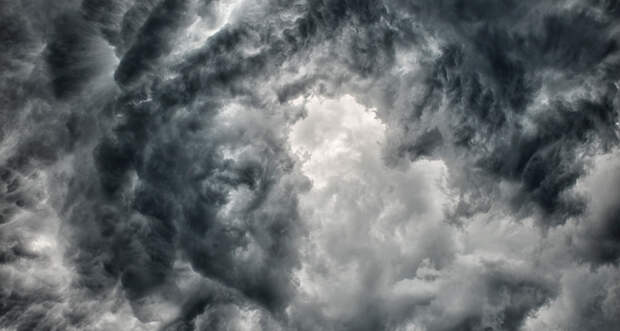Author: Carolyn Gramling / Source: Science News for Students

Teeny-tiny particles in the air can make storms stronger, new research suggests. This is especially true over places where the air starts out relatively clean, such as over the oceans or in the Amazon rainforest.
A passing plume of the tiny pollutants in these places can make a storm up to 50 percent more intense.That’s the conclusion of a new computer analysis.
The smaller an air pollutant particle is, the longer it can remain aloft in the air. And the longer it stays in the air, the farther it can travel. Such small particles are known as ultrafine (meaning super small) aerosols. Each will be less than 50 nanometers — billionths of a meter — across. (For perspective, a human hair may be 80,000 to 100,000 nanometers wide.)
Such nanopollutants spew from a wide range of sources. These run the gamut from car exhaust and wildfires to printer toner. When inhaled, these tiny pollutants can cause harm to the body and brain. When drawn into the atmosphere, they can alter the weather.
Fairly large air-pollutant particles can help form clouds. But scientists used to think the ultrafines were too small to do that. New research suggests that’s wrong. Ultrafine aerosols indeed may help drive storms in the Amazon and elsewhere. That would mean they may play a big role in how water (the basis of storms) moves across the planet.
“I have studied aerosol interactions with storms for a decade,” says Jiwen Fan.
She’s an atmospheric scientist who led the new study. She works at the Pacific Northwest National Laboratory in Richland, Wash. “This is the first time I’ve seen such a huge impact” from these tiniest particles, she says.Her team shared its findings January 26 in Science.
How to make a cloud
Particles such as soot are quite tiny. Still, they’re far bigger than ultrafine aerosols. Sooty bits are more than 100 nanometers across. They can help create clouds by allowing water vapor to condense onto them. This begins the formation of tiny water droplets. When enough of them get together, they turn into a cloud that we can see.
But water vapor has a far harder time condensing around tinier particles. For that, the air must hold even more water vapor than normal. This waterlogged air is described as supersaturated.
It rarely occurs. Usually, the air hosts plenty of larger aerosols. Water droplets…
The post Super-tiny pollutants may help fire up fierce storms appeared first on FeedBox.